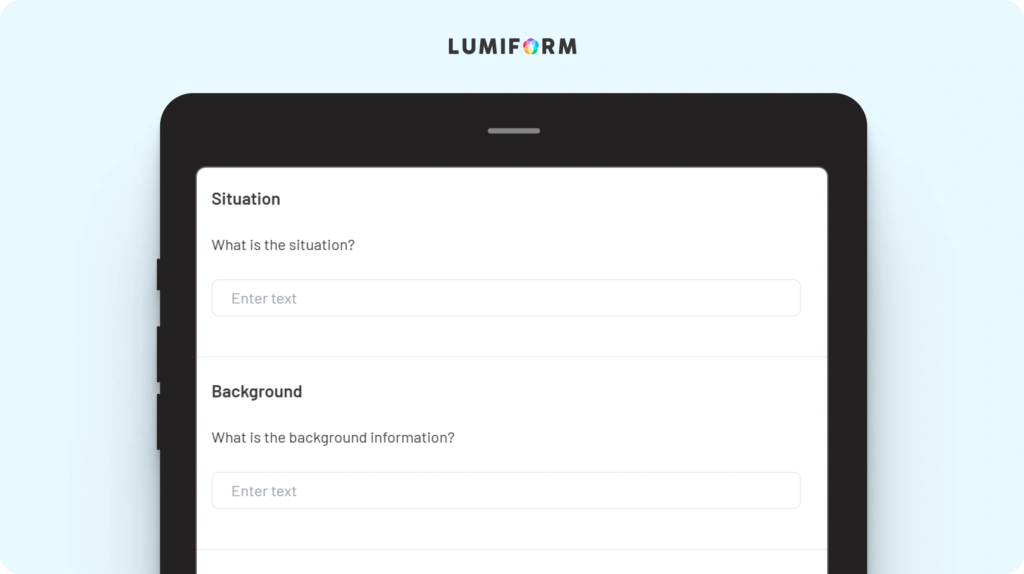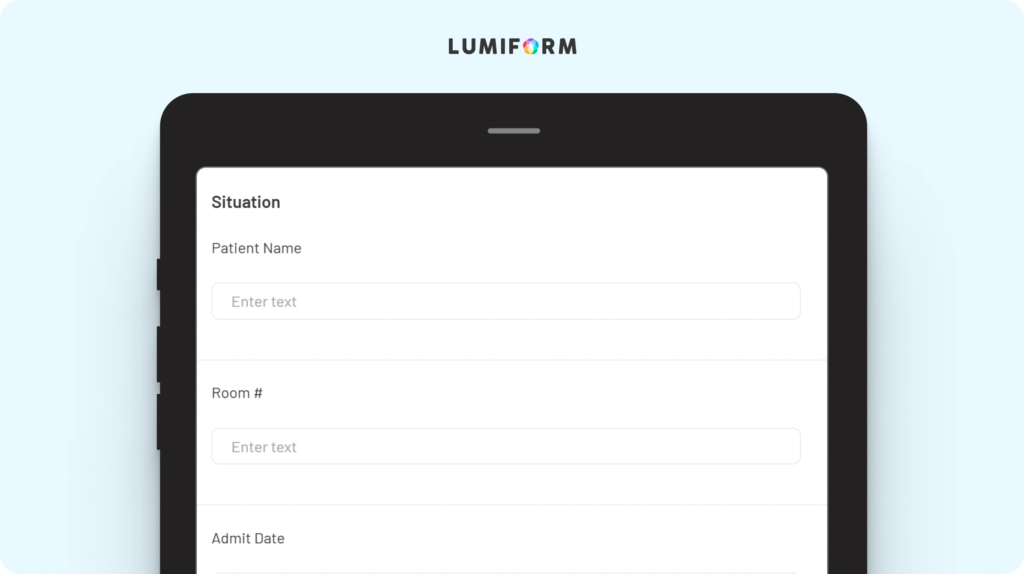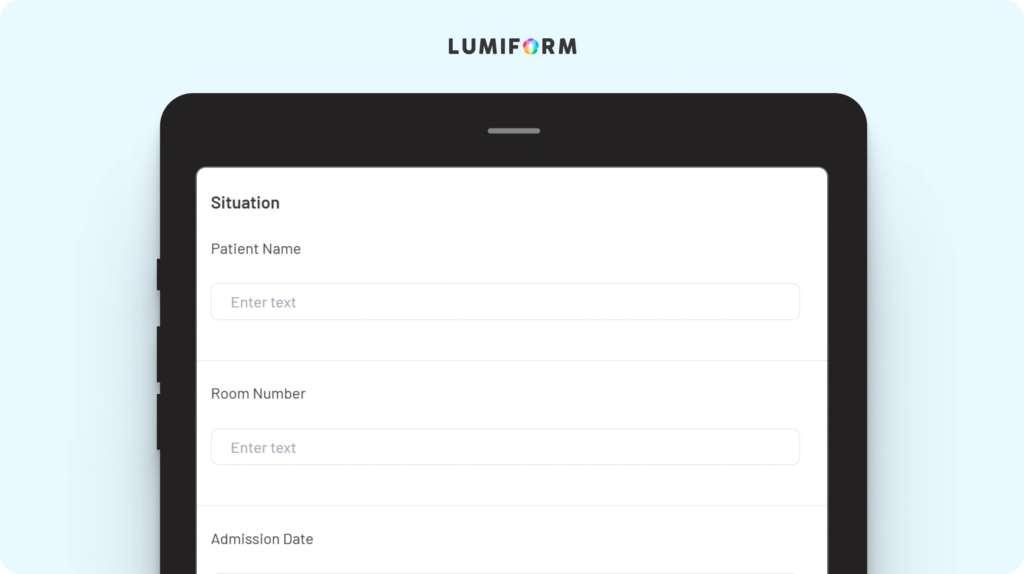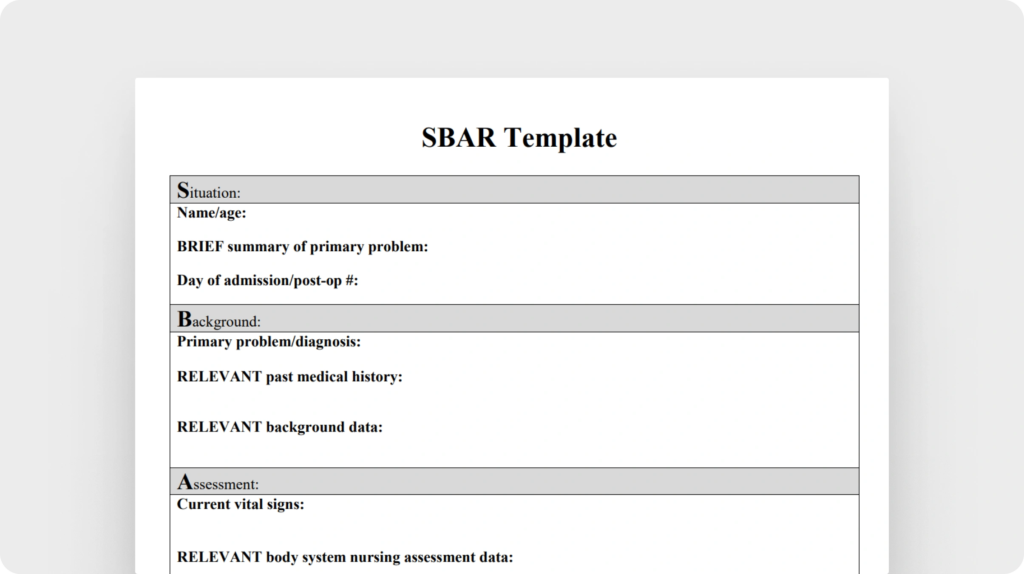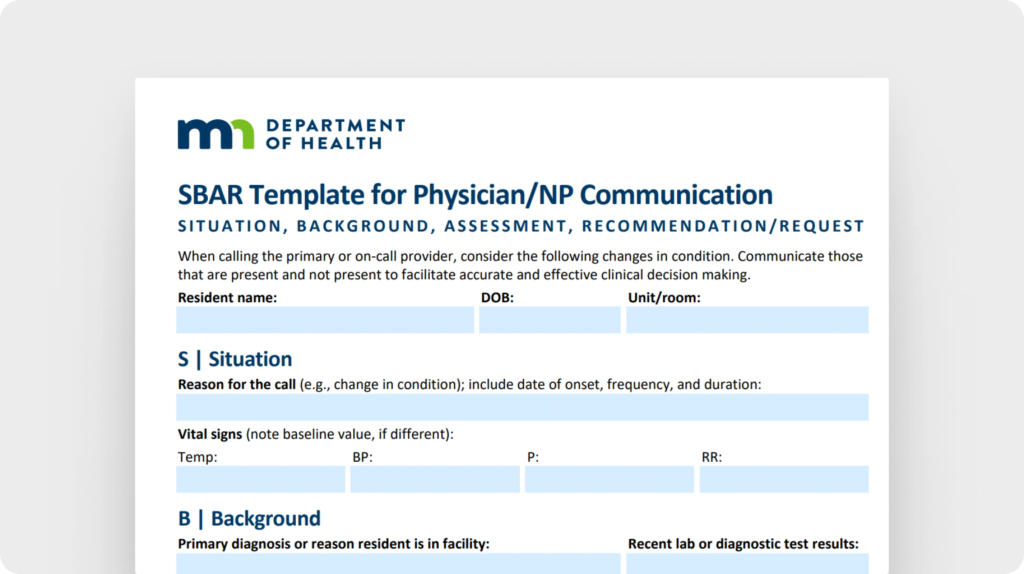Clear, concise communication is critical in high-pressure environments like healthcare, emergency services, or any situation requiring rapid decision-making. An SBAR template (Situation, Background, Assessment, Recommendation) ensures consistent and effective information delivery, reduces misunderstandings, and improves outcomes through its structured framework.
Using an SBAR format helps you standardize communication, especially during shift changes, patient handovers, or critical incident reporting. Without a clear structure, important details can get missing, leading to delays or errors in decision-making. A well-organized SBAR template ensures everyone is on the same page, enabling faster, more informed actions.
Whether you’re a nurse, doctor, or team leader, adopting this approach simplifies complex information-sharing and fosters better collaboration. By focusing on the essentials, you can save time, minimize confusion, and improve operational efficiency in even the most demanding situations.
SBAR templates
Streamline communication and decision-making in critical situations with these SBAR templates, designed to help you structure clear, concise, and effective information exchange:
SBAR template
The SBAR template provides a simple yet effective framework for structured communication in critical situations. It helps you organize information into four key sections: Situation, Background, Assessment, and Recommendation. Perfect for healthcare, emergency response, or any high-stakes environment, this template ensures clarity and consistency when sharing vital details. You can customize the template to include specific fields, such as patient identifiers, team roles, or task priorities, making it adaptable to your specific needs. Its standardized approach minimizes misunderstandings, allowing teams to act quickly and confidently.SBAR nursing template
The SBAR nursing template is tailored to help nurses deliver accurate and concise patient updates during handovers or when escalating issues to physicians. It ensures critical details like patient status, medical background, and recommended actions are communicated effectively, reducing the risk of errors in care. Easily customize this template to include fields for vital signs, medication updates, or care plans, aligning it with your workflow. Its structured format supports seamless collaboration, improving patient outcomes and team efficiency.SBAR handoff template
The SBAR handoff template is ideal for shift changes or departmental transitions, ensuring that essential information is passed on without omissions. It organizes key details into a clear format, helping teams maintain continuity of care and avoid miscommunication during busy handoffs. You can adapt this template to include specific handoff priorities, such as pending tasks or immediate concerns. Its customizable structure ensures it fits perfectly into your organization’s processes, saving time and improving care coordination.SBAR template (anselm.edu)
This SBAR (Situation, Background, Assessment, Recommendation) template from Saint Anselm College (anselm.edu) provides a structured framework for clear communication in healthcare. The PDF includes sections for each SBAR component, ensuring concise and effective information sharing. Customize it by adding patient details or workflow-specific fields. Visit the page to download and start using it today.SBAR template for physician/NP communication (health.state.mn.us)
This SBAR (Situation, Background, Assessment, Recommendation) template from the Minnesota Department of Health (health.state.mn.us) helps streamline communication between physicians and nurse practitioners. The PDF provides structured sections for each SBAR component, ensuring clear and concise patient information exchange. You can customize it by adding fields for specific workflows, such as follow-up actions or patient identifiers. Visit the page to download and start using this template today.
How to create an SBAR template in Lumiform
Creating an SBAR template in Lumiform helps your team communicate clearly and efficiently in critical situations. Begin by structuring any of these templates into the four SBAR components: Situation, Background, Assessment, and Recommendation. Use customizable fields to capture the exact details your team needs, such as patient conditions or task priorities. This ensures no vital information is missing.
To make it easy for your team to use, include dropdown menus or pre-filled options for recurring scenarios, like common recommendations or standard assessments. This not only saves time but also ensures consistency across all communications.
Once your template is ready, you can assign it to specific team members and provide instructions directly within the form. With Lumiform’s mobile compatibility, your team can access and complete the template on the go, improving responsiveness during handovers or urgent situations. This streamlined process ensures better outcomes and smoother collaboration.

